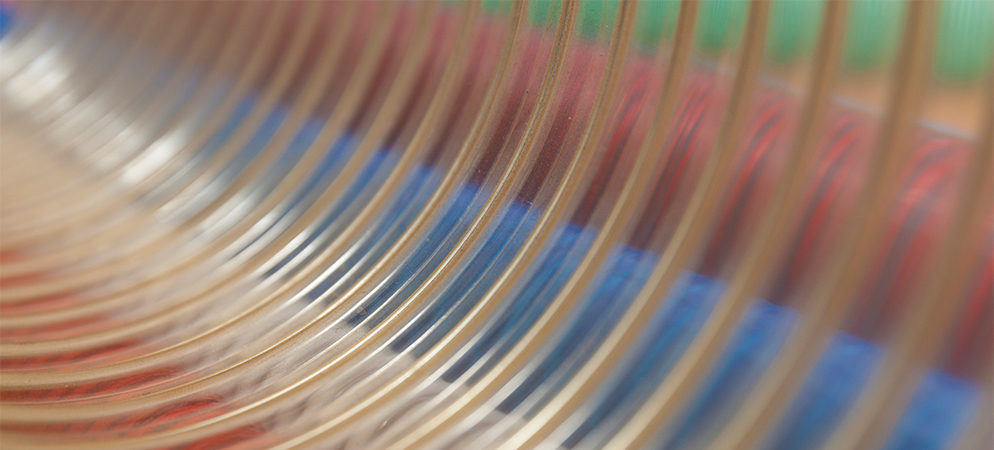Ever try to push a golf ball down a garden hose? It’s not easy, my friend. That’s what it’s like trying to send uncompressed 4K streams over a 1Gb link. Something’s gotta give, and we prefer it not be the bulging vein on the IT guy’s forehead.
That’s where compression comes into play. There are a lot of compression algorithms out there, so why not just use the latest and greatest? We’re glad you asked! For the types of use cases and applications intended for TesiraLUX, the latest algorithm may not be the greatest. In the last 20 years, gains in video compression have increased about 400 percent, but over that same period, the complexity of the algorithms has increased one hundred-fold (10,000%)! This creates longer compression encode and decode times, resulting in increased system transmit latency. More recently developed algorithms focus primarily on high compression ratios (imagine pushing a golf ball down a drinking straw!) and are only realizing 25-30% gains in compression.
While consumers are used to the high compression ratios like those found in h.264/AVC or h.265/HEVC that are necessary for delivering video over mobile et. al. (and the increase in artifacts that come with the compression), TesiraLUX is not intended for those scenarios. Our “sweet spot,” as it were, is low latency, visually lossless transport at very low compression ratios. Since high compression was not a design goal, we focused on more mature, less complex algorithms with well-shaped constant bit rate streams like M-JPEG. M-JPEG is also royalty-free, whereas other popular algorithms, including JPEG2000, MPEG 2, h.264/AVC, and h.265/HEVC, are not royalty-free. So since we’re using a garden hose to transmit video instead of a drinking straw, M-JPEG works just as well with less complexity and, as a result, lower latency.
What we’re trying to say is we did our homework, including the extra credit, and chose the right tool for the job.
Now, if we could just get that pesky golf ball out of the hose…
